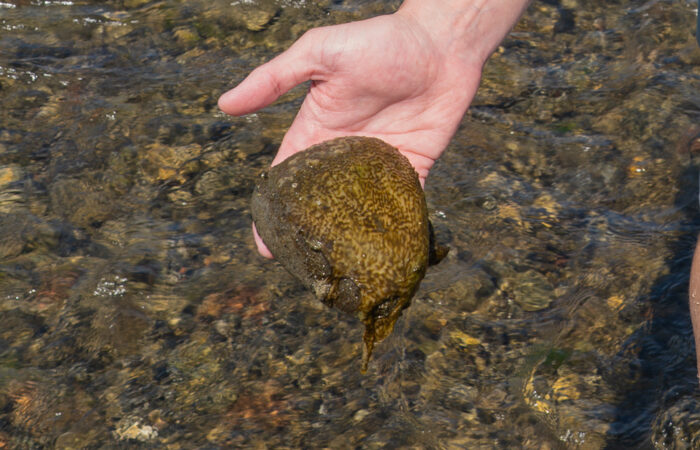
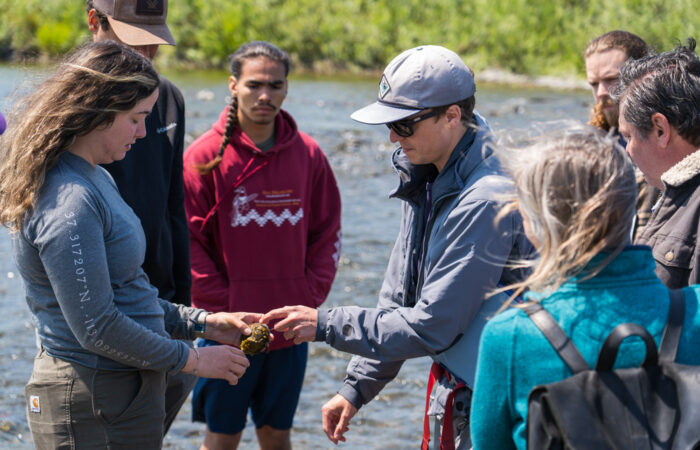
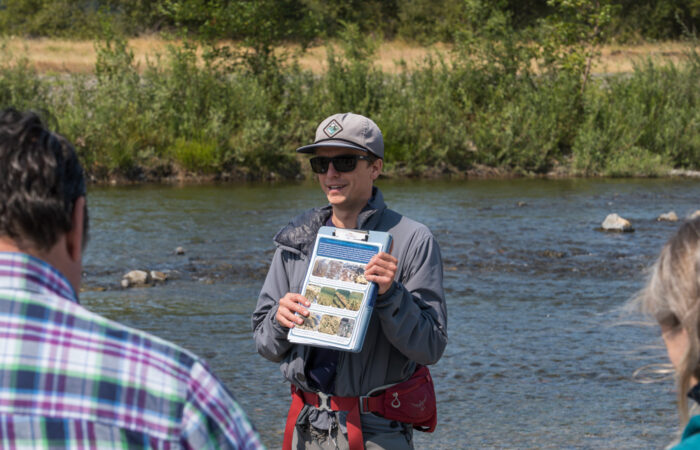
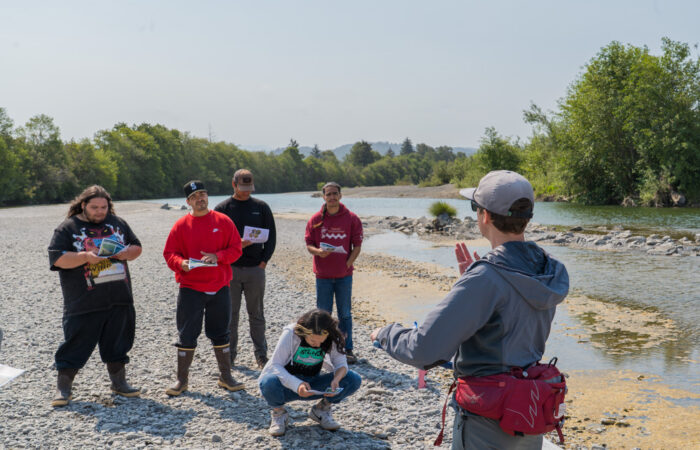
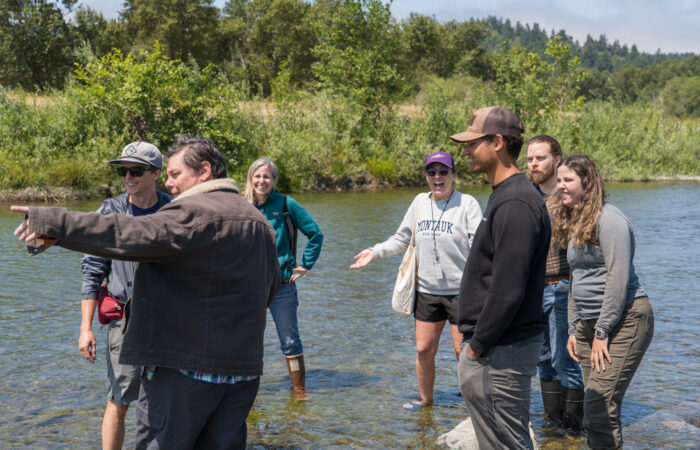
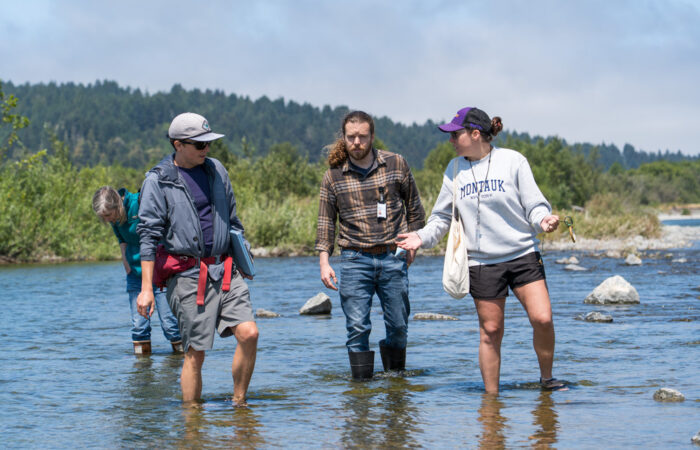


Last week, 𝗕𝗹𝘂𝗲 𝗟𝗮𝗸𝗲 𝗥𝗮𝗻𝗰𝗵𝗲𝗿𝗶𝗮 𝗧𝗿𝗶𝗯𝗮𝗹 𝗘𝗻𝘃𝗶𝗿𝗼𝗻𝗺𝗲𝗻𝘁𝗮𝗹 𝗣𝗿𝗼𝘁𝗲𝗰𝘁𝗶𝗼𝗻 𝗔𝗴𝗲𝗻𝗰𝘆 hosted a training led by 𝗠𝗶𝗸𝗲 𝗧𝗵𝗼𝗺𝗮𝘀, Senior Environmental Scientist at the Northern California Water Board, about identifying 𝗛𝗮𝗿𝗺𝗳𝘂𝗹 𝗔𝗹𝗴𝗮𝗹 𝗕𝗹𝗼𝗼𝗺𝘀 (𝗛𝗔𝗕). In this training session, students were introduced with a presentation detailing the different species of 𝗖𝘆𝗮𝗻𝗼𝗯𝗮𝗰𝘁𝗲𝗿𝗶𝗮 (Blue-Green Algae), how to identify them, and how to collect a sample in the field. After the presentation, the students walked down to the Baduwa’t to get some experience in the field. 𝗠𝗶𝗸𝗲 𝗧𝗵𝗼𝗺𝗮𝘀 walked everyone through how to cover a set area and visually screen for 𝗛𝗔𝗕s, as well as how to measure coverage of the 𝗛𝗔𝗕s in the water source.
𝗖𝘆𝗮𝗻𝗼𝗯𝗮𝗰𝘁𝗲𝗿𝗶𝗮 exists in most areas around the world and comes in a couple of different shapes & sizes. Some 𝗖𝘆𝗮𝗻𝗼𝗯𝗮𝗰𝘁𝗲𝗿𝗶𝗮 grow suspended in the water column (Planktonic), while others can grow attached the bottom in mats (Benthic). Potential exposure to Benthic 𝗖𝘆𝗮𝗻𝗼𝗯𝗮𝗰𝘁𝗲𝗿𝗶𝗮 can increase when mats float up to the surface and accumulate in areas that are frequented by people and pets. Some of these 𝗛𝗔𝗕s produce 𝗖𝘆𝗮𝗻𝗼𝘁𝗼𝘅𝗶𝗻𝘀, which if present, can pose a risk to humans and pets. Learning about 𝗛𝗔𝗕s and the best practices to monitor them is vital to ensuring the safety of our community and the Baduwa’t for future generations to come.
Originally Published: 7/16/2025

